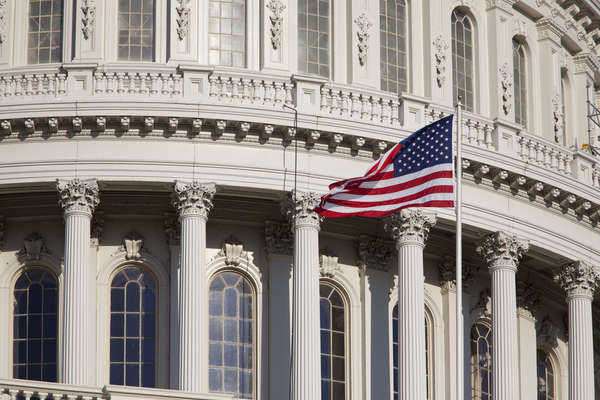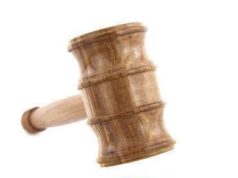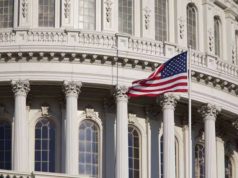Table of Contents

The United States Supreme Court is perhaps one of the most powerful institutions in the country. Since its establishment, the Supreme Court has been the ultimate legal authority, tasked with interpreting the Constitution and ensuring that the government operates within its confines. However, over the years, the Supreme Court has come under heavy criticism for holding too much power. Critics argue that the court has increasingly become politicized, making decisions based on political ideologies rather than legal reasoning. This article examines the Supreme Court’s power criticisms, how it has impacted US politics, and the legal system.
Background Information
The Supreme Court of the United States, also known as SCOTUS, is the highest federal court in the country. It was created in 1789 by the Constitution and has the power of judicial review. The judicial review power allows the court to review and interpret laws passed by Congress and determine if they are constitutional. The Supreme Court is composed of nine justices, one of whom is the Chief Justice.
Over the years, the Supreme Court has handed down numerous landmark decisions that have reshaped the American legal landscape. Some of the most notable cases include Brown v. Board of Education, which declared segregation in public schools unconstitutional; Roe v. Wade, which legalized abortion nationwide; and Citizens United v. FEC, which granted corporations First Amendment rights to spend money in political campaigns. All of these cases have had a profound impact on American society, sparking intense debates and discussions among politicians, legal scholars, and the general public.
However, the Supreme Court has also been criticized for its power. Critics argue that the Court has too much control and has become increasingly politicized. This criticism has only grown in recent years, as the Court’s decisions have become more closely tied to partisan politics.
Impact on US Politics
One of the most significant impacts of the Supreme Court’s power criticisms is its effect on US politics. The Court’s actions and decisions can have far-reaching effects on the country’s political landscape, leading to intense debate and scrutiny.
One example of the impact the Court has on politics is the appointment of new justices. The appointment process is highly politicized, with both liberals and conservatives fighting hard for their preferred candidate. The stakes are high since the Court has the power to shape policy and laws for generations.
Another example is the rise of single-issue voters. The Court’s decisions on issues like abortion and gay rights have polarized voters, making their stance on these issues a deciding factor in elections. This has led to the creation of interest groups that are wholly focused on a particular issue, mobilizing voters to support candidates who align with their views.
Lastly, the Supreme Court’s power has led to political gridlock. When Congress cannot agree on a particular issue, they often leave it up to the courts to decide. This puts even more pressure on the Court to make decisions that are politically favorable to one side or the other, which can further inflame partisan tensions.
Impact on the Legal System
The Supreme Court’s power criticisms have also had a considerable impact on the American legal system. Critics argue that the Court’s decisions have become increasingly politicized, leading to a loss of confidence in the judiciary.
One of the significant impacts of this criticism is the rise of judicial activism. Judicial activism occurs when judges use their personal beliefs and values to interpret the law, rather than relying on their legal expertise. This has led some justices to make decisions that many believe are more about politics than legal reasoning.
Another impact is the loss of trust in the judicial system. When the Court’s decisions are seen as political rather than legal, the public’s faith in the judiciary can erode. This can lead to a decrease in the perceived legitimacy of the Court’s decisions.
Finally, the Court’s power may lead to systemic changes in the legal system. In recent years, many have called for reforms to the Court, such as term limits or expanding the number of justices. These changes could fundamentally alter the structure of the Supreme Court, changing the balance of power and the way it operates.
Case Facts
To better understand the Supreme Court’s power criticisms, it is essential to examine a specific case. The following are ten important facts about the case of Bush v. Gore, one of the most controversial cases in recent history:
- The case began in the aftermath of the 2000 presidential election, where George W. Bush and Al Gore were both running for President.
- The election results in Florida were incredibly close, with a margin of just 537 votes separating the two candidates.
- As a result of the close results, a recount was ordered statewide. However, this recount was stopped by the US Supreme Court, which ruled that the recount violated the equal protection clause of the 14th Amendment.
- The decision was controversial, with many arguing that the Court’s intervention was inappropriate and politically motivated.
- Some legal scholars argued that the Court’s decision was flawed, as the equal protection clause was not applicable in this case.
- The decision was also unexpected, as many believed that the Court would not interfere in such a controversial political issue.
- The case was ultimately decided by a 5-4 vote, with the Court’s conservative justices voting in favor of Bush and the liberal justices voting in favor of Gore.
- In the aftermath of the decision, many argued that it had a significant impact on the presidency of George W. Bush, as it gave him the legitimacy he needed to govern.
- The case also had implications for the perceived legitimacy of the Supreme Court, with critics arguing that the decision was politically motivated and eroded public trust in the judiciary.
- Almost 20 years later, the case remains controversial, with many arguing that it was one of the most important cases in modern legal history.
Conclusion
In conclusion, the Supreme Court’s power criticisms have had a profound impact on US politics and the legal system. The Court’s decisions are increasingly scrutinized, with many arguing that they are driven more by political ideologies than legal reasoning. This has raised questions about the legitimacy of the Court, and the role it should play in American society. As the Court continues to make decisions that shape the political and social landscape of the United States, it is likely that the criticisms of its power will only continue to grow.
The criticisms that the United States Supreme Court has received over the years are largely related to judicial activism. Martin v. Hunter’s Lessee helped to extend the Court’s reach of power even further, giving the Court authority over State supreme courts in all matters related to Federal law. The Court continued to operate in an untrusted state, helping to develop and define Federal law in a rational manner.
The Chrysler Chapter 11 Bankruptcy
U.S. Supreme Court opinions received a lot of criticism in 2009 when America’s third-largest automaker faced bankruptcy and a possible liquidation during the automotive industry crisis of 2008 and 2009. As the world’s economies took a downfall, one of the hardest-hit industries was the American automotive industry, largely due in part to the energy crisis that weakened the economy between 2003 and 2008.
A focus on low-fuel economy sport utility vehicles in the early part of the decade proved to be a devastatingly regretful decision, as their popularity dwindled when customers began to instead purchase automobiles which produced better gas mileage. Although all automakers were hurt during the economic crisis, Chrysler was one of the most affected, and it became the first American automaker to face bankruptcy since 1933.
When Chrysler failed to reach a restructuring plan on their own before the April 30, 2009 deadline, a bankruptcy judge approved a Government restructuring plan and a sale of Chrysler, a rare intervention on private enterprise by the Federal Government. The plan was to allow the assets of the company to be sold to an Italian automaker, Fiat, with the U.S. Government and Canadian government having a minority stake on the company.
The sale and restructuring plan was blocked by Indiana pension plan bondholders, appealing it to the U.S. Appeals Court for the Second Circuit. The sale was allowed but followed by a further appeal to the U.S. Supreme Court. Justice Ruth Bader Ginsburg, in an emergency statement, put a hold on the sale. The next day, however, on June 9, 2009, the U.S. Supreme Court allowed the sale and procedure for the New Chrysler organization restructuring to continue. It was found later in a written document that the Indiana bondholders did not “carry the burden” of proving that the Supreme Court should block the sale.
The decision of Justice Ruth Bader Ginsburg was a controversial moment in the U.S. Supreme Court history, which attempted to reverse the decision, at least temporarily. Though many critics believe that the actions by Ginsburg and the initial Supreme Court opinions were unnecessary and expanded beyond the rightful reach of the Supreme Court, others believe that it allowed for further meticulous deliberation, which ultimately led to the final decision of allowing the sale to move forward. This extra review allowed the Supreme Court to keep the other branches in check, especially in a rare situation in which the Federal Government unconventionally stepped into private sector territory to save a failing company.




















